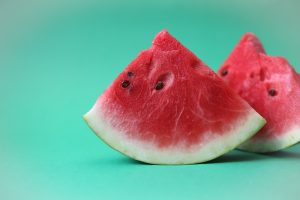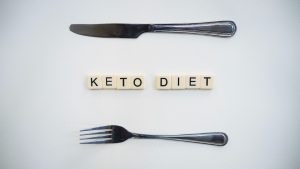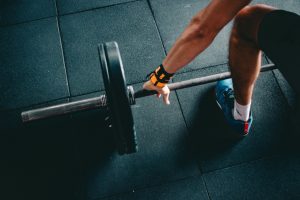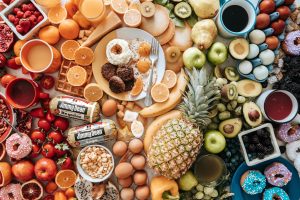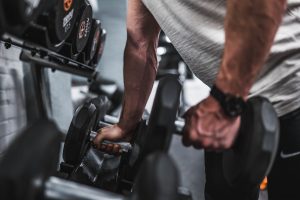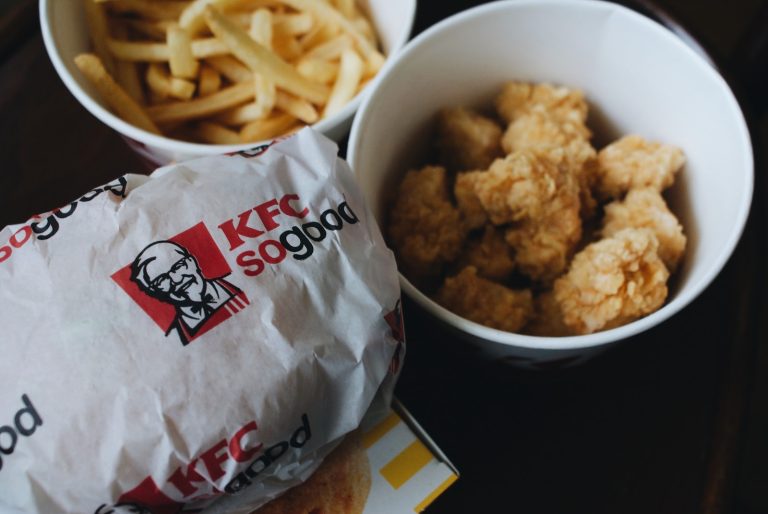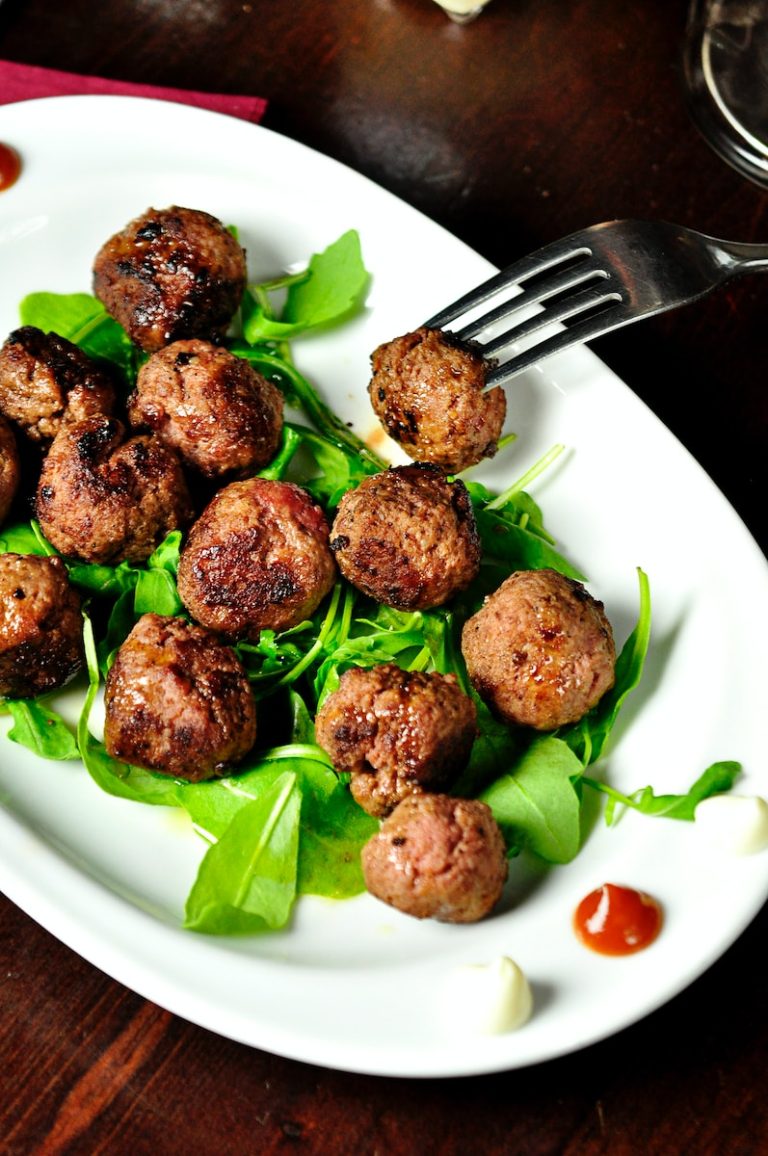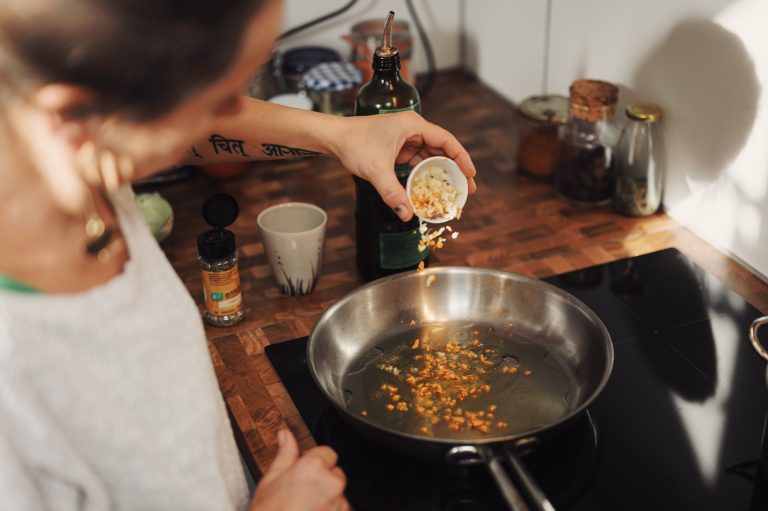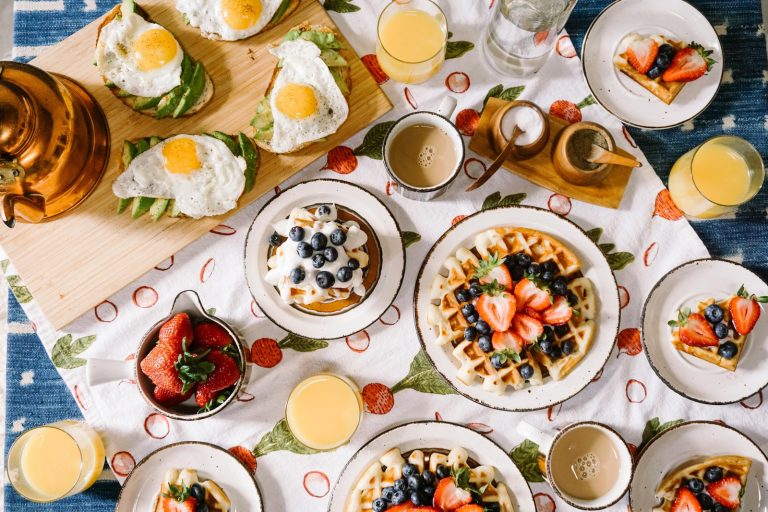The program that I utilized in my post how I shed 65 pounds in a Year. I wasn’t the first person to try this method and I’m not even the one who had the greatest weight loss. Because it has proven to work for all of the people I know who has used this program I’m putting it out there for everyone to see. This low-carb and intermittent fasting diet plan will help to transform your body through changing the frequency and type of food you consume food.

The program explains exactly what you are allowed and shouldn’t eat as well as the times you are allowed to eat what. It’s a tolerant diet plan that recognizes that food is a an integral part of our lives and relationships. The loss of weight (and weight increase) occur naturally throughout your the course of your life. This program is designed to integrate into your daily routine and not be a hindrance to it.
Let’s get started!
Let’s discuss the objectives for the food plan first.
In the end, the aim in the programme is to shift your body’s metabolism away from burning glucose (by decreasing the amount consumed) and to burn fat. There are many other benefits, like the way your body reacts to insulin.
We’ll be discussing some of these during the program.
It is divided up into three major sections.
- 2-week kickstart
- Long-term stage of weight loss
- Maintenance
For this post, we’ll examine parts 1 and 2. The maintenance phase will be covered in a subsequent article.
2-Week Kick Start on Low Carb and Intermittent Fasting Weight Loss Diet
The initial two weeks will jump straight into your intermittent fasting and a low-carb diet. It can be pretty intensive, so let’s look at the main goals that you should be focusing on during this time.
- Eliminating the sugar completely (in the beginning, it will comprise natural and added sugar, with the exception of small amounts present in vegetables, and sugar substitutes such as Stevia)
- Eliminating all refined carbohydrates (bread chips, pasta, crackers, etc.)
- Eliminating all non-vegetable carbs
- Removal of all dairy (solely due to the sugar content and thus rendering it unfit for reason one as well as reason three)
- Increased the amount of fat in your diet (avocado coconut oil, butter, ghee and the grass-fed cattle, olive oil salmon, chicken, sardines and more.)
- Intermittent fasting is a method to manage insulin resistance (whether just a few days in a week, alternating-day fasting or even daily fasting)
Sugar
Let’s begin with sugar. Sugar must be removed out of your daily diet.
There’s nothing can be consumed which will increase the levels of insulin faster than sugar, and this includes processed sugar that is not naturally occurring (i.e. brown sugar, table sugar honey, honey, etc. ).
Foods that lack the fiber content that is naturally present makes them incredibly easy for the liver to convert into fat. There’s no other option for this particular food, as it comes with no other nutritional benefits.
Once it is absorbed to your body, it raises insulin, and your liver detects the presence of insulin and releases the insulin into fat stores…what else does it have to do. It’s only useful to use in the future as fuel.
Then, in the initial two weeks you will also want to eliminate all sugar that naturally occurs in addition. This is most often found in fruits (don’t be concerned about the trace amount of sugar found in vegetables).
Fruits can be brought back into the diet after the two week period due to the important health benefits that come from specific fruits (i.e. blueberries, strawberries, blackberries, etc.) however, for the first two weeks, let’s leave them out too.
Remember that during this two-week time frame, we’re trying to get our body’s system to cease searching for carbs and sugar (glucose) as an energy source. Therefore, we must eliminate it from the body in order to help the body reset.
Sugar Substitutes
Sugar substitutes of all kinds are out. The belief that they were fine since they didn’t alter glucose levels in the body is not true.
It’s not about the amount of sugar in your bloodstream, but the amount of insulin you’re producing because of the beliefs your body holds. You take an alternative to sugar then it is believed by your body that you have eaten sugar “thinks” that you have taken a sugary drink (actually it happens before you actually take it, as your body is very clever) and causes your body to release insulin in order for the body to “resolve” the sugar that is set to enter the blood.
Therefore, even if you’re not eating sugar, your body thinks you are and activates the sugar clean-up team – insulin. It begins to push the nutrients into your liver to produce fat.
In addition, the majority of sugar substitutes fall in the category of processed foods, which means they are not allowed in the first place.
Carbohydrates
Carbs must be eliminated. It’s a part of the intermittent fasting and low carb diet plans.
Carbs are a clear example of processed foods (i.e. pasta chips, bread, chips crackers, anything that has flour, etc.) however, there are also naturally occurring carbs (i.e. potatoes, rice, quinoa, fruit, etc. ).
The natural carbs can be added back to your diet after two weeks with a deliberate manner and you shouldn’t be worried about letting them go for ever.
We’re simply trying to make it through the cleansing phase and redirection to fat stores. We can’t fool the body by feeding the body carbs, either naturally or processed. We must make it quit to avoid this source of energy.
There are products that, according to their labels, indicate that the food contains carbs. For instance, 100 dark chocolate that is 99. Actually, all dark chocolate may contain carbs, however those carbs are primarily for fiber content within the food.
Fiber is not absorbed into the body and is not triggering the insulin reaction. Thus, food items that contain fiber as the only source of carbohydrates are okay since the body doesn’t release insulin after consumption. It is after all, it knows that the fiber will go through the body without absorption.
Dairy
Dairy must be eliminated in this two-week period as well. Not just because it’s dairy-based but due to its natural sugar and carbs. Therefore, as part of eliminating sugar and carbs in the course of kicking off it is necessary to remove them for the next two weeks. But don’t fret because you’ll be able to return it at a later time.
What you CAN eat
The best part is here. What can you eat. There’s plenty of food you can enjoy as you begin the intermittent fasting and low carb diet program.
Dietary Fats
Dietary fats will dominate during the next two weeks. This will further signal to your body that it should seek out fats for fuel ….that will comprise the bulk of what’s available whether from the food you consume or through your body itself during periods of fasting.
There’s really no limit on the number of dietary fats you can consume during this time.
Do not fill your plate with meat-based foods in this time of year because they could be harmful to your body, and also because there are other vital fats available.
Try olive oil avocado, butter as well as fish (the more oily, the better) i.e. sardines, salmon, mackerel, etc. ) coconut oil, Ghee organic beef, eggs the chicken (thighs on breasts) bacon, provided it’s not burned, etc.
You must provide your body with these healthy fats that will help speed up the process of converting fat into fuel source.
It is also important to up your intake of food fiber. Think dark-colored, leafy greens.
Here’s a great list of fibrous vegetables that can be used as fiber (clearly in this two-week time frame, remove the potatoes from accessible sources. Check our recipe here on Keto turnip chorizo soup. it’s chock full of dark greens!
Fiber
Remember that fiber isn’t taken in by your body, it’s merely an instrument to “push” food through the system. At this point, fruit and vegetables don’t have the same amount of fiber sources.
Don’t fret too much about whether or not you consume “too much” fiber-based vegetables. It’s virtually impossible. You can consume too much fruit as it is a natural source of sugar.
Also, boost your intake of dietary fats and fiber sources of energy over in the coming two weeks.
Also, check for this Keto Turmeric Chorizo Soup recipe to find a fantastic recipe to gain dark greens, healthy fats and fiber! Do not use heavy cream.
Snacking
Snacking. Ideally for the time of the kick-off it is best to have two main meals. The first one is when you break your Fast (say 12 noon) and the second after the close of your meal (say 7:15 so that you are finished before 8:45).
In general, you should try to stay clear of “snacking” between these meals because eating snacks can increase the levels of insulin.
Most of the foods you consume cause the release of insulin. This is the body’s way to prepare for the sugar. If there’s no carbs or sugar to target the insulin and then it gradually makes its way out of bloodstream. It’s a natural process.
But, every when insulin is released, your body creates another layer (although it is very brief every moment) in insulin resistance.
The purpose of our low-carb plan and the intermittent fasting regimen is to help our bodies be able to properly respond to insulin levels that are normal.
We accomplish this by fighting resistance to insulin. If we’re not able to use insulin, the only method by which for the body to make insulin compliance more difficult is by using more insulin.
Imagine a drug user who develops tolerance to their specific substance. Similar to insulin. The more insulin you receive, the more it craves.
At the time of beginning of the campaign, we must restrict the time when insulin is released in our bodies. Therefore, we should avoid eating snacks.
If you are compelled to snack, just adhere to the rules. It’s better not to take a snack rather than abandon the program completely. If you have a snack, don’t be a jerk about it.
The release of insulin is only an insignificant amount of resistance. Therefore, if you eat a snack you aren’t doing any major harm to your fitness.
However, if we are able to improve each day, that’s what we should aim at, so in order to make steady progress, we need to take care not to eat too much.
The Intermittent Fasting Part of the Weight Loss
Naturally, fasting is an integral element of the low carb as well as intermittent fasting. If you’re looking to know more about where to begin the IF diet.
This program follows the 16:8 fasting pattern. It means that you’ll be able to consume 8 hours of food during the day, and then go on a fast of sixteen hours.
Many people, especially on fasting days, achieve satisfaction by avoiding breakfast, having lunch after noon, and eating dinner by 8 pm.
When you fast you’ll only drink liquids with no calories. Things such as the black variety of coffee (no sweetener) or plain tea (again with no sweetener) as well as electrolyte waters (aka the sole water). So let’s talk about them.
Before bed, it’s a good idea to drink 6-8 8 ounces of water.
After waking take another 8-12 pounds of sea salt infusion water – 1 teaspoon. This will balance your minerals.
If you feel faint when you’re doing intermittent fasting, you should take a sip of the saltwater infused water because it could be an electrolyte deficiency that can be addressed by a little sea salt.
It is important to be mindful not to overdo the sole water since there is a risk of consuming excessive amounts of sea salt, which can cause other problems. But, a teaspoon in the morning, and whenever you feel lightheaded is suitable.
Tea is also an acceptable drink in the state of fasting, along with sparkling water in the event that there aren’t any added sugars or sweeteners.
The period of fasting is the simplest portion of your diet, this means that you need to plan a meal that is less.
The aim is to fast for 16 hours with eating for 8 hours. If you’d like to finish your meals at 7 pm, you can extend the next day’s eating window to 11.
If you require assistance in tracking your fasting habits, look into the Intermittent Fasting Calculator It could be extremely helpful in helping you stay on course.
Final Thoughts on Phase One
Another important aspect to consider is the initial two weeks. To reap the most benefits from this period of fasting, it is advised to restrict “snacking” even during the period of fasting.
If you can restrict your meals to two per day with no snacking, you will gain the most benefits. If you aren’t capable of doing that, it’s fine.
It’s not detrimental to you if you eat snacks (within the restrictions that the diet allows) but it may “accelerate” the fasting if you do not eat snacks.
The main purpose of fasting is not losing weight, but to lose the result of exercise.
The main purpose of fasting is to reduce your insulin levels in the short-term as well as to decrease the amount of insulin resistance.
When you lower your insulin levels, your body naturally shifts away from a glycogen-based energy system to one that is based on fats. Do not be concerned of “depriving” your body of glucose. Your body is much more sophisticated than the one you are. Your body can generate its own glucose via an process called the gluconeogenesis. This is the ability of your body to make new glucose using fat stores.
You’re trying to shift the body from being dependent mostly on food as the primary source of fuel, and instead switch your body towards the ketones and gluconeogenesis systems to assist you along the path.
I’m not saying that, your food is still providing the body with energy but we want it to be a alternative to the main energy source. The body processes the food you eat during your periods of eating, together with the ketosis and gluconeogenesis that occur by fasting. If you simply modify your diet and do not push your body to the phase of gluconeogenesis.
Eating While Doing Intermittent Fasting
It is important to realize that you are able to consume as much of the permitted food you wish in eating times. Do not worry about the calorific intake of “good” food. We’re not trying to cut down your calories intake to 500 calories per day. Eat. Get good foods at the perfect moment. This is the aim.
Your body will discover a need for the calories, or eliminate excess calories (yes your body could let food go through without converting it into fat, particularly when the levels of insulin are in control).
Fasting can also boost your metabolic rate at rest This is not something that can occur on a calorically deficient diet.
Therefore, if you have a higher metabolic rate, any worries regarding “calories” should be forgotten. Focus on the quality of the food, not the amount.
With that mentioned, you should be sure you’re eating enough food and to pay attention to your body’s signals to tell that you are full. indulgence, although it is unlikely to have negative consequences on the goals you’re trying to achieve may cause extreme discomfort.
Phase 2 of EMH’s Low Carb and Intermittent Fasting Plan
Congratulations on getting through the most difficult part. Two weeks of no sugars or carbs is a very difficult task. Your body must have moved from a glucose powered unit to a fat burning powered unit. This is the reason and it takes around two weeks for that to occur.
It is likely that you have noticed some weight loss. The majority of it can be attributed to water (who is interested in whether it’s the water, or fat…extra weight is weight! ).
The body stores water when you are dependent on glucose and carbohydrates to fuel its needs. Therefore, the weight loss you have experienced due to losing weight can be attributed to it being the case that your body is beginning the process of transitioning from glucose into fat.
Here’s a brief overview of what you can expect in the coming months.
You’ll continue to adhere to the fasting plan you’ve been following to kick off.
All of you notice weight loss, but it will mainly be fat loss.
Remember that one pound of fat equals around 3500 calories. If your metabolic rate for basil (the amount of energy required to exist) has a value of 2,000 calories you’ll notice that a entire day of fasting will not even eat one pounds of fat. It will take you 36 hours of complete fasting to burn a kilogram of fat. In the course of one week of purified fast, you could be looking to shed around five pounds in fat.
Don’t be frustrated if you don’t see the weight dropping off at a speed you’d like. It’s an entirely mathematical game. The body cannot consume more than a pounds a day on an unrestricted fast, or even less with the 16:8 fasting pattern. Therefore, make sure to keep your progress sensible and continue to move ahead.
If you stick to the 16:8 time-frame, you should be expecting to burn about half a pound of fat each day that you fast. This is still a great result however I’m sure some would like to see much quicker outcomes and, frankly, it’s not likely to happen.
The process of losing weight is different for each person, however the adaptability in the diet of low carbohydrates and intermittent fasting can result in weight loss simply by being patient.
Exercising
Don’t also try to intensify your workout to push your calorie requirements to be higher. Your body will take into account this and cause you to take in more calories during your eating period.
It is certainly possible to do more exercise, but you shouldn’t attempt to push yourself to greater weight loss levels.
It is a great opportunity to train and concentrate on areas of your body that you’d like to see improvement eventually.
If it is a good fitness goals, then focus on your cardio (regardless how much it aids to lose weight).
If you are looking for more distinct arms, legs, butts and more. focus on those areas. So that by the time weight loss has occurred, you’ll have started working on sculpting the body you desire.
Adding Back Food to the Low Carb and Intermittent Fasting Diet
Then, think about the things you can include to the diet. This is the most enjoyable aspect of our low carb and intermittent fasting diet.
When you begin adding back what I refer to as the pure carbs. These are the carbs that have not been refined. (so bread, pasta chips, pasta, etc. are still out).
Pure carbs include rice, potatoes dairy, yams, and even fruit. They can be incorporated to your diet, but not in the same amount that they were before. It is recommended for a 50-75 grams of carbs a day to make up this new plan of eating.
For me, I am a fan of fruit, which is why I get my carbs from fruits. Fruits offer the added benefit of a higher amount of vitamin and fiber as well as nutrients. Berries are the most nutritious kind of fruit for consumption due to their antioxidants.
But, any of these natural carbs that are pure and natural are excellent sources for this type of carb intake.
Thus the white rice portion of 1 cup has around 45 carbs. A Cup of sweet potatoes contains around 27 carbs. The same amount of blueberries contains approximately 21 grams of carbohydrates. The milk in a cup contains approximately 12 carbs. A cup of cheese has less than 10 grams of carbs. Quinoa in a cup – 39 grams. The glass of wine is 3.8 grams. One can of beer is 13 grams.
You can conclude that there’s an opportunity to bring carbohydrates back to your diet, without compromising the progress or gains.Now you could be tempted to keep carbs off your diet. Some things to consider about.
The first thing to do is to be a challenge. You don’t want to be the type of person who refuses to eat. We must enjoy food and have a meal with your friends.
In the second, your body can benefit from a certain amount of carbs, vitamins, fiber, and nutrition that comes with carbs that are pure.
Also, it is not advisable to be depriving your body of these sources of nutrition forever. It is just a matter of keeping them in the right position for your food intake to ensure that your body will continue to rely on fat as fuel.
This is a low-carb as well as intermittent fasting but not a zero-carb diet.
If you prefer to eliminate carbs of your diet for the majority of the time, then you can try carb cycling. When you are doing carb cycling, it means that you’ll get one day per week where you consume carbs. On this day, you’ll consume anywhere in the 75-150 grams of carbohydrates.
No shame days
If you’re having an off day, it will not matter. If you consume food during your fasting period or have an off day (cake cookies, cakes or ice cream, heavy drinks fries, etc.). Don’t worry. A single one day (or more) isn’t going to ruin months or weeks of healthy eating. All you need to do, without self-pity or negative thoughts to get back to your routine the next day.
It might take a couple of days for you for you to regain the level you were at, but what’s the point. If you don’t are scheduled for a bikini photo shoot the following day and you must look flawless in the picture, then it’s not really a matter of. Your body will change either way or another, through the amount of pounds. Good days will propel you the right way using pounds. On bad days it’ll shift you in the opposite direction by pounds. Not even a pound (let alone pounds).
After a rough day of drinking or eating, we are capable of convincing ourselves that we’ve gained ten pounds. It’s impossible. When we are feeling good, and we’re doing everything right, we’re capable of convincing ourselves that we’ve not lost any weight. This is due to a malfunction in the brain.
Be aware of that and accept that your brain may be incorrect. Don’t be a victim of poor decisions. This low-carb and intermittent fasting diet can be adapted to allow you to recuperate from the occasions when you do not behave or indulge without loosing all you’ve worked hard for.
Drinking Alcohol on the Low Carb and Intermittent Fasting Diet
Now, drinking. Drinking is a common method to consume carbohydrates. They’re not any more harmful to your body, in terms of carbs, than sweet potatoes.
In actual fact, there’s lots of research in the field that suggests there are some positive effects of drinking.
The main reason why drinking can lead to weight gain is the fact that it is normal to consume more calories while drinking. Our inhibitions decrease and our inclination to do things that we normally wouldn’t do sober is increased.
Therefore, you’re more likely to eat that pizza or cake when you are drinking than you’re not drinking. Therefore, keep your thoughts in check when you drink. Drinking is the key that opens the doors to the room of poor decisions.So this is it. Stay on track. Include high-quality, pure carbs and continue to make progress. We appreciate you taking the time to read this article on David’s low-carb, intermittent fasting diet. Read our other articles below for additional information and inspiration to make your change successful.

